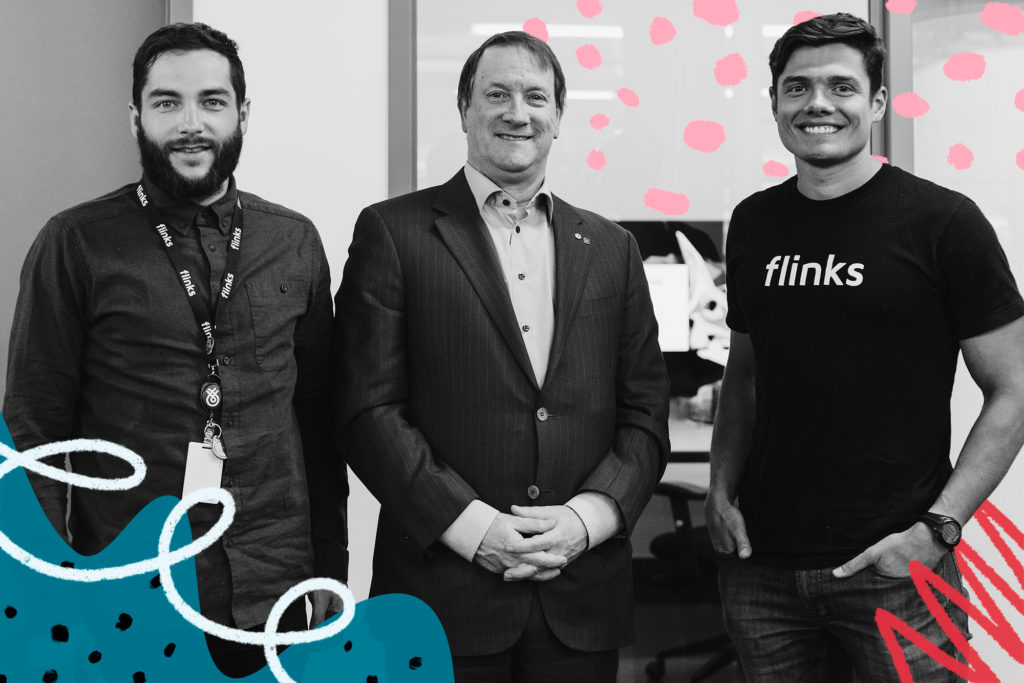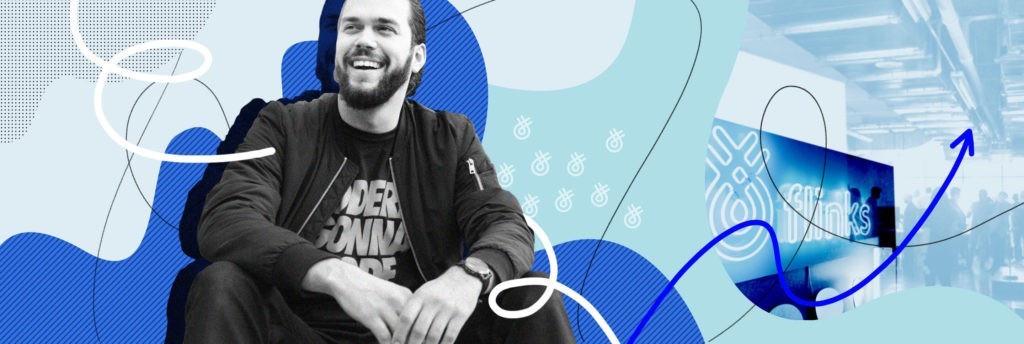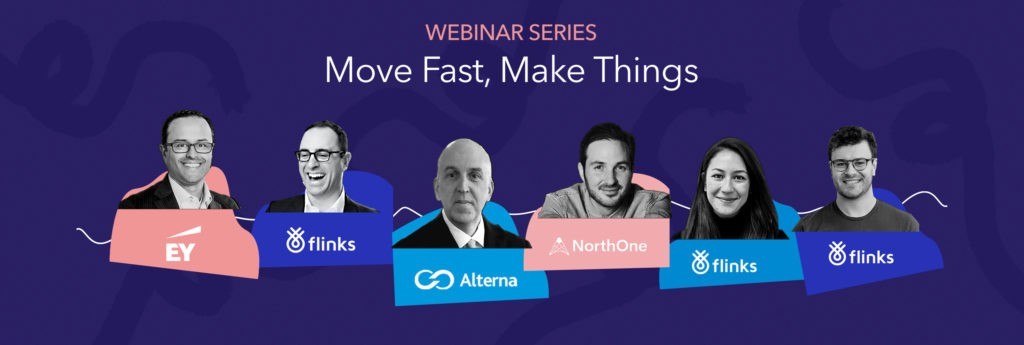
Fred Lavoie is Flinks' co-founder and COO. He leverages what he learned through successes and failures to build the future of finance: one that enables everyone to play the lead role of their existence.
National Bank of Canada’s Louis Vachon on Finance, Tech and Forging the Path Ahead
We’re kicking off the second season of Connect with a very special guest: National Bank of Canada’s CEO, Louis Vachon.
A few notes before we start: this episode was recorded in January, so you won’t hear anything about COVID-19 or our latest round of financing.
Also, National Bank of Canada is a major Flinks investor. And this is precisely why we were thrilled to have this conversation: when Louis Vachon became CEO of NBC, the iPhone didn’t even exist. For more than 14 years, he’s been leading the organization — a 25,000+ people company — through a series of rapid market shifts.
In this episode, we discuss what it takes to successfully merge finance and tech, evolving as a leader, and using corporate ventures to generate innovation through partnerships.
Connect brings you deep dives into the world and mindset of innovators. If you liked this conversation and don’t want to miss on future episodes, catch us on Apple Podcasts and Google Podcasts, stream us on Spotify, or subscribe on your favorite podcast app.
No time? No worries! Read our 4 key takeaways from the conversation
- Breaking silos starts at the top
Over the past 14 years, Louis Vachon has been mirroring in his style of leadership the shifts that he is seeking for his organization as a whole. He now involves key stakeholders in his decisions, just as he expects his leadership team members to work out tough decisions based on a shared understanding of each other’s context.
- Innovation can sprout, and spread, from anywhere…
National Bank of Canada’s internal audit group runs beta projects on some of the cutting edge technologies accessible to the bank through its corporate venture arm. This goes to show that innovation isn’t the prerogative of a specific team — it’s about people bridging knowledge gaps, and teams having the means and space to experiment.
- …but it must be planned properly
To unlock teams’ potential to innovate, knowledge and expertise needs to move across different business lines. But this is easier said than done. Integration across the business is an ongoing effort involving both structures and people — from an office dedicated to disseminate expertise up to the corporate venture leaders making the case to test new technologies developed by the startups they fund.
- There’s an alternative to the age-old question: build or buy?
Corporate venture is a strategy allowing the bank, in essence, to sidestep either building or buying new technologies. The bank funds startups to diversify and outsource some of its R&D. Most of the resulting products and solutions are tested and even deployed to bring value to the bank’s customers or improve its operations.
Here are a few highlights from our conversation.

Making finance and tech work as a single unit
Louis: Historically, 100% of the people we chose for training programs in the capital markets division would have an MBA or equivalent. About 10 years ago, we started taking 25 to 30% with an IT background, on the basis that we could train these people on the finance side — and that it would be tougher to train MBAs to have deep programming knowledge. In training, now, 30 or 40% of the staff has a strong IT background.
Leading edge — doing stuff that others didn’t do — a lot of it initially started with the capital markets division. And now we move to AI. It means that for learning algorithms, we have a very good expertise internally.
Four or five years ago, we started moving that expertise laterally within the organization. Canadian banking is universal banking, you have many lines of businesses. Innovation can come from any one of them. You have to make sure — that’s easier said than done I guarantee you — that knowledge and expertise can move across the different business lines.
Fred: How do you tackle that lateral challenge?
Louis: If you run your executive committee and management teams in silos, you will have a very siloed organization.
“There is no substitute for very strong alignment within the management team of the organization, in terms of strategy, expertise and talent.”
Fred: What does that look like, not discontinuing the executive team from the directors?
Louis: I’ll give you one example. Let’s take budgeting. We spend about 800M$ a year on technology. 350M$ is spent on new projects and initiatives. How do you allocate it? One way is to say: I decide that capital markets get 15M bucks, personal and commercial banking gets 200M, wealth management gets 50M, you get it. It works, but you end up with very siloed thinking.
What we did is we sat down with the team, looked at all the different projects, and the team decided where the dollars would be allocated. That’s a lot tougher, it takes a lot more work.
“As we learn in the army, sweat saves blood. That’s true, too, in finance.”
The next big change: Open Banking
Dominique: The last big change for your customers was the adoption of mobile banking. What do you think will be the next big change?
Louis: It has to be Open Banking. How is it being defined, deployed and enacted? How are customers going to live through Open Banking?
Given the fact that a dominant player in one part of the country, and a challenger in other parts of the country, from both a theoretical and practical standpoint it should make us more open to Open Banking. We probably have more to gain than to lose here.
Where the rubber meets the road is the issue of data protection and cybersecurity. Consumers, governments, regulators want better choices, but at the same time they’re very sensitive about the issue of security.
“Open Banking is one of the chapters of an old debate about who owns the data and how it’s going to be managed globally.”
After ten years of the banks being the piñatas of the regulators and the politicians after the financial crisis, FANG [Facebook, Amazon, Netflix, and Google] have now replaced the banks as the piñata. There’s going to be significant political and regulatory focus on the technology and socioeconomics impacts of the activities of the digital giants. That will in some cases be positive for initiatives like Open Banking, and in some cases, if it’s poorly handled, that will be an obstacle.

Using corporate venture to create partnership opportunities
Fred: What prompted you to start the early stage investment fund at the bank?
Louis: Going back 4-5 years ago, we could see the technology transformation was accelerating. Just doing stuff internally was probably limiting the velocity at which we could adapt, we could learn, we could try new stuff.
I was at the Business Council of Canada, there was a presentation on corporate venture by large Canadian firms. They were explaining how they used corporate venture to increase revenue, but also to be on the lookout for new ideas in technology and avoid falling into excessive insular thinking.
So I came back and went to see David Furlong, and said “David you’re a volunteer.” And David is from Newfoundland so he doesn’t know any better — go be in charge! And then he hired Philippe Daoust. And Philippe is from Valleyfield so he doesn’t know any better — go be in charge! We have an army of a few people and 12 investments, including you guys. We’re lean and mean, trying to be non bureaucratic.
Often with corporate venture, if they are too isolated and the organization is too siloed, the rest of the bank cannot be bothered with the “pet projects” of the corporate venture guys.
“Almost all the investments we made we use the product. We want the solution to be tested, to be deployed, to be used within the bank.”
We do that for our customers but also for ourselves, to see how the industry is evolving. This gives us real R&D. We do a bit of R&D internally, but if we can leverage that with what’s been done externally this can be a very powerful model.
Fred: What would you attribute that success of being able to leverage the solutions to?
Louis: Keeping the teams small, keeping very good contacts between our small venture team and the business line. Philippe and the team make a very good job at explaining “Why don’t we test this and see how that goes?”
And by the way, it’s not just the business lines. With some startup involved in learning algorithms, it’s our internal audit group that’s been running the beta project on some of the technology. Not the group that automatically comes to mind when you’re thinking about innovation.
Fred: What has the success rate been for your investments?
Louis: Quite good so far. For the majority, we’re looking at greater valuation. Now, we are looking at a major bull market in technology. The rest test will be in the down cycle. My view was that the failed IPO of WeWork was a pretty significant moment in terms of bringing valuations and business models back to planet Earth.
It doesn’t mean that we will stop investing in technology, but at some point cash does matter — you need to be able to translate your ideas into cash.
Fred: What would be your recommendations to startups that are looking for an investment?
Louis: Deal with people you trust is #1. Shop is #2. There is a world of difference between angel investors, venture funds, corporate ventures and specialized financial funds. In Quebec, government-sponsored entities play a very big role. Shop and diversify a little bit.
Fred: What is the bank looking for before investing?
Louis: Who is the team, do they have passion, do they have the right idea, is that idea scalable? If they don’t have the full team, are they the type of people that can attract the right team?
“It’s always about people. It’s cliché but it happens to be true: who, then what.”
Are they agile enough to scale the organization if they have to? Are they agile enough to realize that they made a mistake and should change direction — that one is a lot tougher on the ego but equally important for startups.
And when you pass that, what positive impacts does this product or solution have on our customers or the operations of the bank? There’s significant gains for us, not just financially but strategically.
You might also like

Full Speed Ahead: Flinks Closes its Series A
Flinks just raised $16M as part of a Series A round. We sat down with our CEO, Yves-Gabriel Leboeuf, to discuss what this means for the future of Flinks.

Move Fast, Make Things: Live and On-Demand Webinars to Accelerate Your Digitization Initiatives
It’s never been more critical to do digital right — and there’s never been a better time to give a helping hand. We’ve gathered the top minds in the financial industry to help accelerate your digitization initiatives.